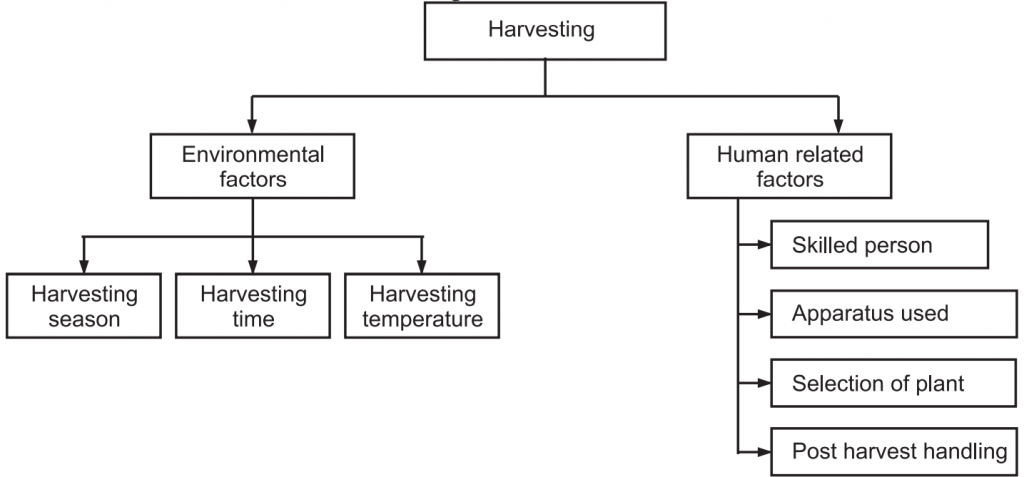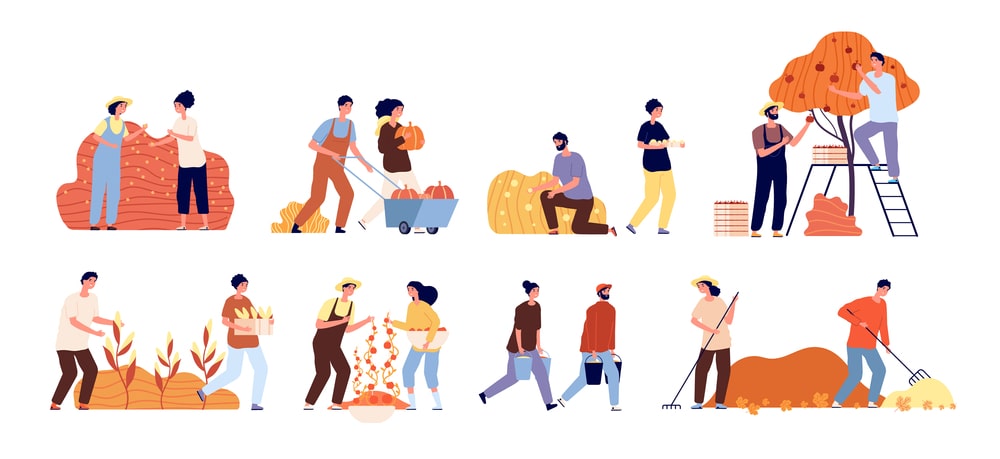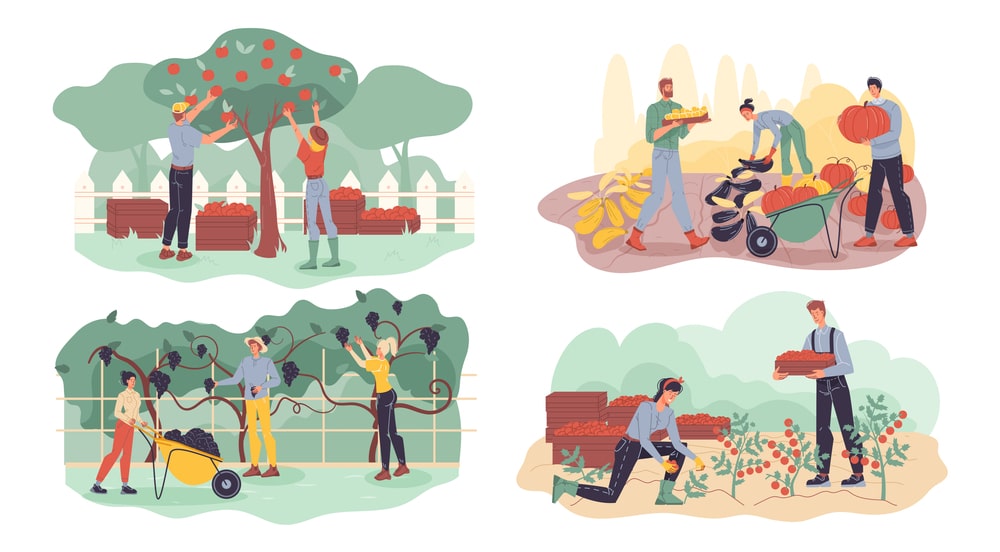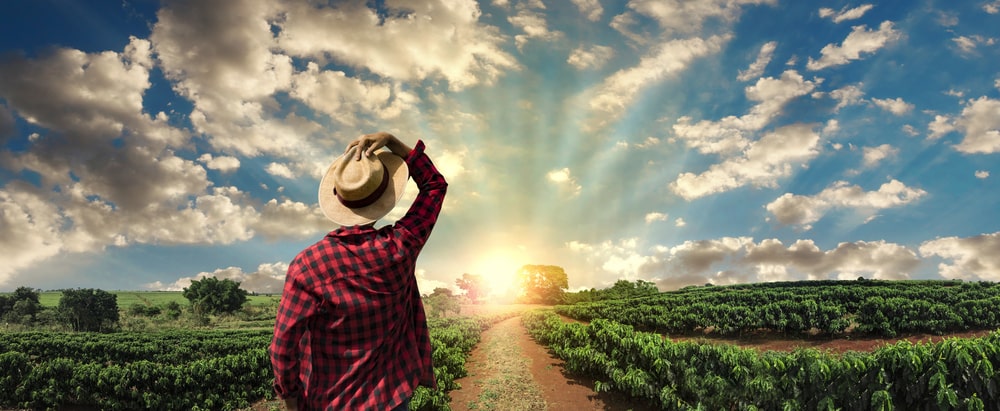Factor affecting Harvesting: Medicinal plants should be harvested during the optimal season or period to ensure the production of medicinal plant materials and are the most important step for finished herbal products of the best possible quality. The time of harvest depends on the plant part to be used. The best time for harvest (quality peak season/time of day) should be determined according to the quality and quantity of biologically active constituents rather than the total vegetative yield of the targeted medicinal plant parts. During harvest, care should be taken to ensure that no foreign matter, weeds, or toxic plants are mixed with the harvested medicinal plant materials. The most important objectives of harvesting are (1) An economic point that needs to focus on the type of crude drug to be harvested (2) The Pharmacopoeial standards of which it needs to achieve (Fig.1).

Environmental Factors
Table of Contents
Harvesting season:
Active constituents of herbs are affected by the seasons (due to climate, rainfall, etc.). So medicinal plants should be collected in the proper season to get the high medicinal value as well as more chemical constituents. Medicinal plants should be harvested under the best possible conditions, avoiding dew, rain, or exceptionally high humidity. If harvesting occurs in wet conditions, the harvested material should be transported immediately to an indoor drying facility to expedite drying to prevent any possible deleterious effects due to increased moisture levels, which promote microbial fermentation and mold. Generally, roots and rhizomes are to be harvested during the rainy season. Barks and flowers are harvested during autumn. Gums/Resins – harvested during dry weather.
Harvesting time:
It is also an important factor that reflects the quality of the plant parts. Determination of the right time for harvesting will vary from one species to another. The collection should be done at a time when the plants are in optimum condition concerning required medical quality and efficacy. This also ensures the best possible quality of raw materials and products. The concentration of biologically and medically active ingredients varies with the stage of plant growth and development. Roots and Rhizomes should be collected when aerial parts are dried down (if not – fleshy and difficult to dry) and harvested after the sunsets. The bark is harvested in damp weather before noon. Aerial parts should be harvested during the late noon season, around 4-5 O’clock. Flowers e.g., cloves are harvested before they are fully expanded during sunsets.
1. Harvesting of leaves: The fresh leaves of the herb can be picked at any time during the herb’s growth. For harvesting herbal leaves for drying purposes, they should be collected in the morning after the dew has dried from the plant, but before the heat of the sun has warmed the plant too much. Generally, leaves should be young. Leaves from the evergreen-type herbs, such as rosemary and thyme, can be harvested just before flowering for the most flavor. When the entire herb plant is desired, the best time to harvest is right before the plant is about to flower. If harvesting the whole plant from a wild growth of herbs, it is good to harvest no more than 1/3 of the plants.
2. Harvesting of flowers: Flowers are the most delicate part of an herbal harvest. It is best to collect flowers during the middle of the day and especially on a dry day. Avoid any flowers that have any amount of damage or decay and do not collect spent flowers. Once picked, move the flowers from the harvest container to the drying area as quickly as possible to avoid bruising.
3. Harvesting of seeds and fruits: When harvesting herbal seeds, choose a dry day, just before the seed is ready to be dispersed. Seeds should no longer be green, brown, or black as it is the signal that a seed has ripened enough. Seeds should also be hard and often have a dry pod surrounding the actual seed. It requires immense patience to not harvest too early.
4. Harvesting of roots: Herbal roots are harvested in the fall when they are full of energy. Roots are some of the most powerful of the herbal parts and the gardener has to pay for them in the effort. Roots are to be dug up the whole. Fresh roots should be washed and cut while they are soft enough to work with. Dried roots can be tough as rocks (no exaggeration) when fully dried.
5. Harvesting of barks: Herbal bark is an important part of the herbal harvest. Since harvesting bark can result in the demise of the tree, the harvest must be done correctly. Peeling off bark from any tree in a complete ring around the trunk should not be done as it will cut off the food supply to the tree and it will die. The bark is harvested during damp days and usually from young branches or young trees.
Harvesting temperature:
India has unique biogeographical positions having all known types of ecosystems ranging from the coldest place, the dry cold desert of Ladakh (Nubra Valley with −57°C), to temperate, alpine and sub-tropical regions of north-west and trans-Himalayas; rain forests with high rainfall; wet evergreen humid tropics of western ghats and arid and semi-arid regions of peninsular India; desert conditions of Rajasthan and Gujarat to the tidal mangroves of Sunderban (West Bengal). Hence, medicinal plants should be harvested under the best possible climatic conditions for the specific species required to avoid either desiccation or fermentation and mold growths that minimize the material’s deterioration. It is correlating between harvesting time and seasonal variations. During day and night, time-temperature variation occurs. Further seasonal changes will give more variation in the temperature. It is seen that day temperature below 23°C is suitable for roots and bark harvest, whereas leaf, flower, and fruits are to be harvested during evening time when the temperature will be 25-28°C. The air temperature is kept at 20-40°C for thin materials such as leaves but is often raised to 60-70°C for plant parts that are harder to dry e.g. roots and barks.

Human Related Factors
Skilled persons:
Growers and producers should have adequate knowledge of the medicinal plant concerned. This should include botanical identification, cultivation characteristics, and environmental requirements (soil type, soil pH, fertility, plant spacing, and light requirements), as well as the means of harvest and storage. All personnel (including field workers) involved in the propagation, cultivation, harvest, and post-harvest processing stages of medicinal plant production should maintain appropriate personal hygiene and should have received training regarding their hygiene responsibilities. The person should be sure about the identity of the plants he intends to harvest without doubt; he should be able to distinguish clearly between the medicinal plant and its closely related relatives to avoid unwanted mixtures. He should choose healthy and well-developed plant material that should not be infested with fungal growth or insects, otherwise, byproducts of these organisms will alter the ingredient profile and could even be poisonous. He should gather only plants that are abundant in that area. Special care has to be taken with leaves and flowers which are much more vulnerable to deterioration than roots due to the nature of their tissue. Unnecessary damage to the plant should be avoided i.e., exercise caution to enable that plant can re-grow. Further mechanical damage to the harvested material should also be avoided otherwise it can result in undesirable quality changes. Identification and discarding unwanted plant materials during harvesting will ensure that no foreign matter, weeds, or toxic plants are mixed with the harvested medicinal plant materials.
Apparatus uses:
Special care should be taken before harvesting the equipment. All equipment, when used, should be clean and free of remnants of previously harvested plants. All containers used during harvesting (cutting devices, harvesters, and other machines) should be clean and free from contamination by previously harvested medicinal plants and other foreign matter. If plastic containers are used, then particular attention is given to any possible retention of moisture that would lead to the growth of molds. Some of the examples are roots, rhizomes, tubers harvested by diggers or lifters. Small seeds are harvested with a seed stripper. Seaweeds producing agar are harvested by long-handled forks. Leaves are harvested by hand plucking, barks are harvested with an ax or bush knife, etc.
Selection of the Plant Parts:
(a) Guidelines for root harvesting: In many medicinal plants, medically effective substances are found in the root. Thus, in many cases, the whole plant gets uprooted by the gatherers and never grows again. To ensure sustainable harvest of root material some of the rules are like:
- Roots are dug at a considerable distance, at least 30 cm, from the main stem or taproot.
- The severing of the taproot is avoided.
- Only the lateral roots are collected.
- After digging covering the hole will ensure protection against infection and invasion by pests.
(b) Guidelines for bark harvesting: The most common unsustainable practice is ring-barking where entire rings of bark are removed around the tree, inevitably leading to the death of the tree and the plant can become endangered. For the sustainable harvest of bark material some of the rules are:
- The barks are peeled from the tree in small pieces leaving most of it intact on the trunk of the trees.
- The barks are removed in long vertical strips using a thin flexible blade/bush knife.
- Ring barking, which is the cut of off entire rings around the tree should be avoided.
- The edges of the strip with an axe are not be cut as this causes the remaining bark to lift from the wood and dry out.
- After harvesting of the barks, ‘tree seals’ are used, e.g., apply a piece of wet cow-dung to the bark wound.
(c) Guidelines for leaf harvesting: To ensure sustainable harvesting of leaves, some rules are followed:
- Individual leaves are plucked instead of leaf striping and the use of sharp pruning shears for leaves is avoided.
- Regularly pruning branches will improve the quality and quantity of leaves.
(d) Guidelines for fruit harvesting: Fruits need to be extracted sustainably so that the biotic integrity of forests and woodlands is supported. To ensure sustainable harvesting of leaves, some rules are followed:
- All healthy, high-quality fruits are not collect but leave some on the ground so that more plants of good quality can germinate.
- Fruits are collected from some trees and leave others completely.
(e) Harvesting of threatened species: Highly threatened species must not be harvested and collected at all to increase their prospects of survival. If this is not done, they are likely to be lost forever. There should be clear information on which plants are threatened. In such cases, the practitioners and communities are trying to discover ways of using alternatives. Additionally, legislation should be put in place to ban the collection and the possession of and trade in those plants.

Post-harvest handling:
After harvest, the harvested fresh plant material undergoes a variety of processes which can be either desirable or undesirable. Through the harvesting process, the balance of substances within the plant is disturbed. Such processes are likely to alter the effectiveness of some of the active ingredients. Once the harvesting is done, the following rules and recommendations are to be followed to ensure a high quality of the harvested material and the products developed: (1) arriving at the place for drying or processing; unload and unpack the plant material as correctly as possible. (2) As soon as preliminary processing is to be started for unpacked plant materials.
Make sure you also check our other amazing Article on : Factors Influencing Cultivation of Medicinal Plants
